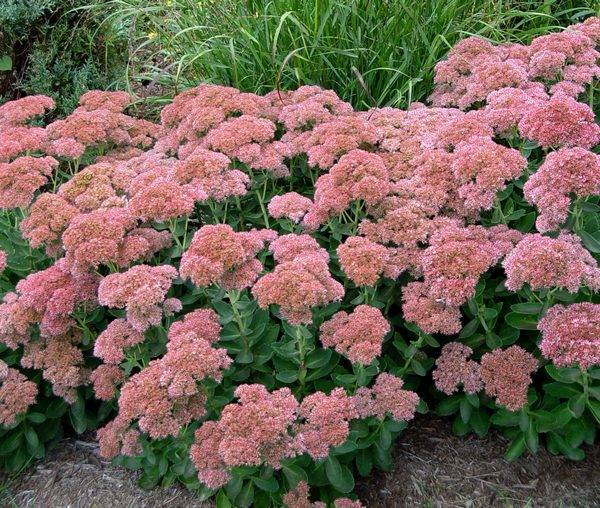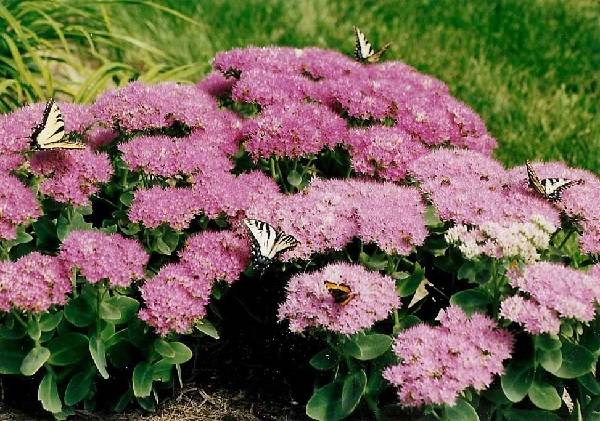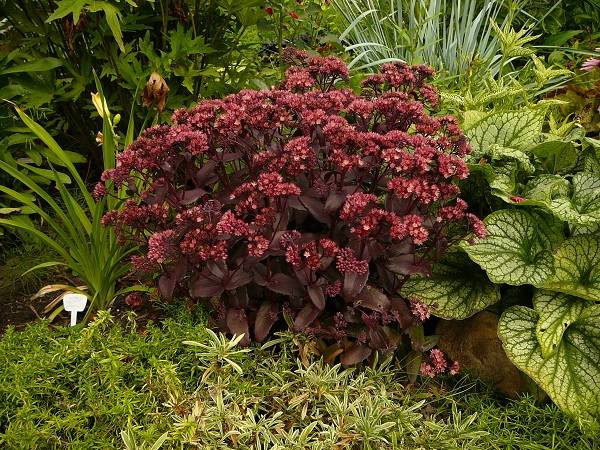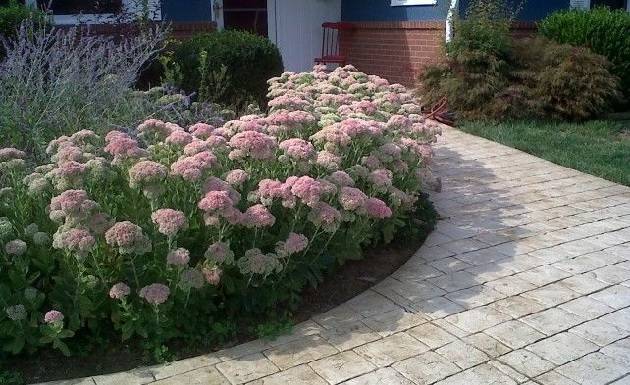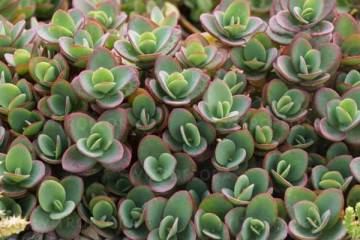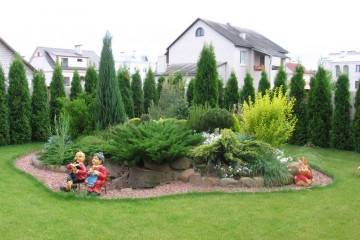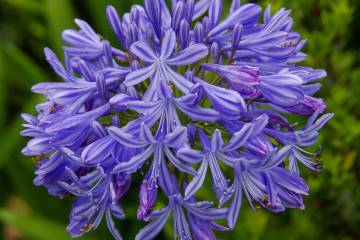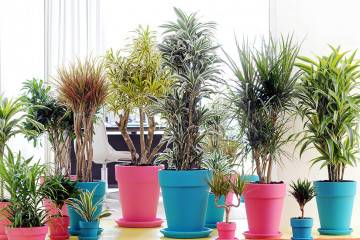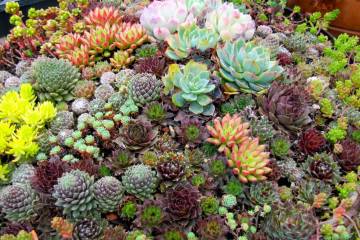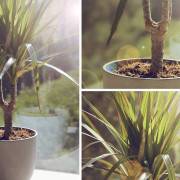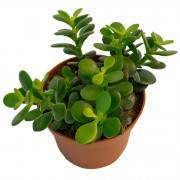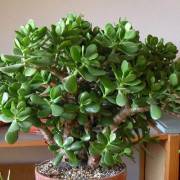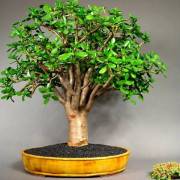Sedum prominent - varieties, planting and care
Content:
One of the most interesting plants of the Tolstyankov family is stonecrop. This plant has many names, for example, it is popularly called hare cabbage. But the word "prominent" best reflects its decorative properties - it is thanks to them that it is grown in the garden.
Description of stonecrop prominent
The botanical description of this plant should begin with its Latin name Sédum teléphium. Sometimes it is called that - sedum. This plant grows in the wild on the plains of Southeast Asia, mainly in certain regions of China and Japan.
One of the most characteristic features of stonecrop is its tall stems, which can reach a height of 50 cm, with thick, rounded leafy plates of rich green color growing on them. It is they who accumulate moisture after rains, so sedum tolerates sunny and dry weather well.
Although the leaves are usually green, red-leaved sedum is also found. Such varieties do not lose their decorative effect throughout the season.
During the flowering period, flowers appear at the ends of the shoots of this plant, forming together rather large umbellate inflorescences. They can have a dark or light pink hue, but there are varieties with a different color.
Some of the most popular varieties of stonecrop include:
- Sedum Brilliant. The oldest of the plant varieties. It was bred by breeders back in 1913, but has not lost its popularity since then. Sedum prominent variety Brilliant is distinguished by a powerful and thick rhizome, as well as tall, straight stems, from which a rather impressive bush is formed. Its leaves are distinguished by a light green, almost grayish tint. This variety blooms with pink flowers from early August to late autumn,
- Sedum Stardust. A relatively low variety, whose representatives rarely grow above 35 cm. Its inflorescences are white or creamy, and it blooms in August.
- Sedum Iceberg is another variety with spectacular white flowers.
- Sedum Frosty Morne - this variety is grown for the sake of spectacular leaves, which have an unusual white-green color. His flowers are pale pink, they are collected in dense inflorescences in the form of shields.
- Stonecrop Diamond Edge, like stonecrop Brilliant, blooms with pink flowers, only of a lighter shade. And its stems reach only 30 cm in height. The main difference of the variety is the decorative dark green leaves, on which cream-colored marks are noticeable.
Some varieties have an interesting shade of leaves, not just flowers. For example, this stonecrop is red-leaved. And sedum Magnificent looks good in almost any corner of the site.
Planting a plant
This perennial flower should not cause any particular difficulties in planting and breeding. It is believed that planting it in open ground is best in spring, when the plant begins its active growth phase. But if there was no such opportunity, then you can wait for summer or autumn.
In winter, there is no way to plant a plant in open ground, but you can plant sedum in a pot, and transplant it into a garden in the spring. This will be better for the plant, as home conditions make the sedum less resistant to disease and pests.
Planting from seeds
Planting a plant is possible using seeds. In this case, small holes for seeds are made right in the ground. The distance between them should be at least 4-5 cm. The seeds are placed in these holes and sprinkled with a mixture of sand, earth and ash, and then watered.
Planting seedlings in open ground
Seedlings can be obtained in two ways:
- Grow seeds in a mini-greenhouse made from an ordinary glass of soil, covered with plastic wrap on top.
- Use cuttings. They are also placed in small pots, covered with foil, and when they are ready, they are transplanted into open ground.
How to care for stonecrop Vidnoye
A person who is interested in sedum, care and reproduction of this plant will simply be surprised at how easy it is to deal with this plant. The main thing is to provide him with a sufficiently bright area for his normal development. A little shade, especially in the afternoon, will do well with sedum. But he needs a lot of light.
In a heavily shaded place, sedum leaves will stop accumulating water. In this case, the flowers become paler in color or do not appear at all. But if you look at this sedum, then its height will be even greater than usual, as the plant will stretch upward in search of light.
Watering
Sedum is a succulent. With its ability to accumulate moisture in the leaves, frequent watering is not needed. It is actively carried out only in the first few weeks after planting. For mature plants, this is no longer necessary, unless the flower may otherwise be severely affected by drought.
Air humidity for him also does not really matter. It is a plant that prefers dry and hot plains in its natural habitat.
Top dressing
Fertile soil for sedum is not required. In the wild, this plant grows even on stones, so it is not particularly fastidious. But the best option is considered to be sandy loam soil, which is pre-enriched with compost.
Any type of this plant needs good drainage, because moisture stagnation can damage the root system. In such cases, it is recommended to specifically make clay soil less dense by mixing it with sand.
To properly care for the plant, you need to periodically apply fertilizers, but only use nitrogen fertilizers with caution, since they reduce the flower's resistance to diseases. It is advisable to add other mineral compositions, or even better - mixed ones, in which there are both minerals and organic matter. This will prolong the lush flowering of this plant, although this procedure is not mandatory.
When grown in a garden, fertilizers are applied to the soil at least twice per season. This is done early in the growth period and before the sedum is supposed to bloom.
Pruning
Any description of this plant contains recommendations for the formation of a bush. This is necessary not only for decorative, but also for sanitary purposes. A beautiful stonecrop bush can be obtained after cutting off too much growing shoots. In addition, in order to prolong its flowering, it is recommended to remove withered petals, dried leaves and damaged shoots in time.
Sedum is distinguished by its ability to grow roots very quickly, so that they do not fill the entire space under the flower bed, gardeners purposefully limit its growth: they install pieces of tiles or slate so that the cleanings do not grow.
Reproduction methods
Before the gardener, sooner or later, the question arises - how to propagate this plant. This is done in several ways.
Seeds
This option is used very rarely, since it is difficult to maintain the grade and the process itself takes too long.
By dividing the bush
This method is suitable for those bushes that are already 4 years old. They must be healthy. The bush is dug out of the ground, divided so that several seedlings with a root system are obtained. This method is used at the beginning of summer so that the root system has time to grow,
By cuttings
The method is applied throughout the summer and even at the beginning of autumn. Cuttings are cut from such a site, where their absence will not damage the appearance. The resulting cuttings are quickly dropped into a container with soil.
Whichever method the gardener chooses, the main thing is to take a good tool, sharp enough, and, moreover, treated with a bactericidal agent.
Transfer
Annual sedum species practically do not occur in nature. All these are perennials that feel great in one place for five years. But after the onset of this period, the above-described division of the bush and the seating of parts on different sides of the site are practiced.
Diseases and pests
Sedum is immune to most diseases and pests, but only if grown outdoors.
In indoor conditions, when the natural defenses are weakening, this plant can be threatened by a spider mite, which is transferred from another plant. In this case, sedum must be treated with an effective drug - for example, Actellik would be a good choice.
Flowering period
Be it sedum Burgundy or any other plant variety, flowering lasts a long time, at least all summer. The flowers of the plant are distinguished by rather rigid petals, their dense corymbose inflorescences are resistant to unfavorable factors. In some varieties of stonecrop, flowering can last until late autumn.
Preparing for winter
The sedum is one of the winter-hardy plants, but young specimens should be sheltered for several months. At this time of the year, a cooling period sets in, and the plant practically falls asleep, so it does not need feeding and watering. But in the spring, when new shoots appear, it will be necessary to provide watering and feeding in a normal mode.
Use in landscape design
The sedum is considered a versatile plant. In landscape design, it is used, for example, to form curbs, to decorate rockeries and rock gardens. Moreover, a beautiful combination with it can be created by both undersized ground covers and taller specimens.
Beneficial features
In Russia, there is a widespread attitude towards stonecrop as just a beautiful garden plant. However, it can be very helpful. It is not for nothing that the diseases of stonecrop are extremely rare - all this is due to the chemicals that are contained in the plant. These are alkaloids, essential oils, organic acids, vitamins and minerals. In folk medicine, it is used as a general tonic; it is also drunk to normalize digestion and improve the function of the circulatory system.
Growing sedum Vidny in the country, you can get not only a beautiful plant, but also a real supplier of medicines for almost all diseases.
